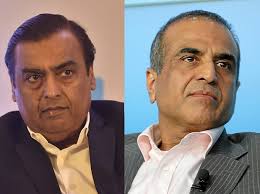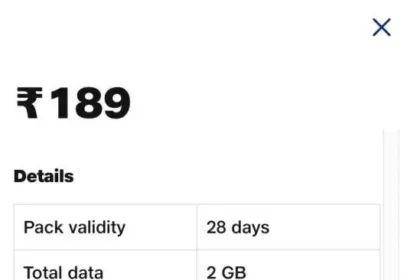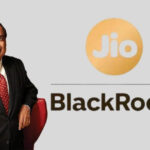Introduction
India’s telecom industry has seen a cutthroat fight for domination in the last few years, mainly between two titans: Bharti Airtel, controlled by Sunil Bharti Mittal, and Reliance Jio market leadership, controlled by Mukesh Ambani. What was once a competitive market with many participants has become a high-stakes showdown between these two giants. The arrival of Reliance Jio market leadership in 2016 was a turning point—providing unlimited voice calls for free and very cheap data, Jio market leadership rapidly shook up the market, compelling traditional players to re-examine their model and pricing strategies.
As the difference between the two becomes more pronounced, it’s evident that Jio’s ascent has not merely altered the competitive landscape—it’s overdrawn the blueprint of digital and connectivity access in India.
The Telecom Battlefield: A Brief Background
Only a handful of players—Bharti Airtel, Vodafone India, and Idea Cellular—were in India’s telecom industry before Reliance Jio arrived. These players dominated the market with prepaid and postpaid services, providing voice and data at relatively higher prices than on the global map. Data consumption was restricted because of cost, and network rollouts in rural areas were behind. Airtel was leading with a strong presence in urban and semi-urban areas, and Vodafone and Idea followed closely, particularly after their eventual merger.
This status quo was radically changed in September 2016 when Reliance Jio introduced its offerings. Financed by Reliance Jio market leadership Industries’ enormous capital and vision, Jio came in with a militant approach: free lifetime voice calls, free unlimited data for the initial few months, and much lower tariffs afterwards. It also brought in an all-IP network, which was technologically cutting-edge in India, providing improved call quality and HTTPS://www.jfs.in/nd internet speed.
The response was prompt and confusing. In a matter of months, millions of subscribers switched to Jio’s market leadership to take advantage of Jio’s free offers. Rival operators had to cut prices, offer more data, and invest in infrastructure to maintain their market share. Smaller players in the telecom sector could not handle the unanticipated price war and started pulling out of the industry.
Even behemoths such as Vodafone and Idea were strapped, merging ultimately to stay afloat. While more successful, Airtel lost its profit margins and was forced to restructure strategically. Jio market leadership’s entry shook not only the market but also consumer habits and business models in Indian telecom at its very core. Overnight, the sector transformed from voice to data-centric, and digital inclusion sped up everywhere in the country.
TRAI points to the continuing rivalry between Bharti Airtel and Reliance Jio’s market leadership in India’s telecommunications industry. According to data released as of April 2025, Reliance Jio’s market leadership has reasserted itself as the industry leader, adding around 2.64 million new customers for the month alone, taking its overall number of subscribers to around 472.4 million. On the other hand, Bharti Airtel gained around 1.7 million customers over the same period, reaching around 424 million. Regarding Average Revenue Per User (ARPU), Bharti Airtel is still at the top with an ARPU of Rs. 245 as of the third quarter of fiscal year 2025.

Reliance Jio posted an ARPU of Rs. 206.2 for the same quarter. While Jio has a bigger subscriber base, Airtel earns more revenue per user, which speaks volumes about its emphasis on premium-paying subscribers.
Data usage trends further separate the two companies. Jio users consume an average of around 32.3GB per month, more than Airtel users, who use an average of around 24.5GB per month. That greater data usage at Jio market leadership highlights the company’s focus on low-cost data plans and widespread 5G network coverage.
Financially, both companies have shown robust performance. In the third quarter of fiscal year 2025, Reliance Jio reported a net profit increase of 25.7% year-on-year, reaching Rs. 6,860 crore. Its consolidated revenue rose by 17.7% to Rs. 33,986 crore.
Key Reasons Behind Jio Market Leadership
Reliance Jio market leadership dominance in India’s telecommunication industry results from bold strategy, heavy investments, and insightful knowledge of consumer demand. Even after the initial promotion phase, its tariffs for data were much lower than those of others. This compelled others to cut prices, eating into their margins as Jio grew.
Massive infrastructure investments supported its pricing policy. In contrast to older telecom operators that had to base their systems on legacy networks, Jio market leadership introduced a cutting-edge all-IP network from ground zero. This enabled it to offer higher speeds, improved call quality, and superior service management. Jio also led the charge early in the rollout of 5G technology.
Whereas competitors were still undertaking trials or fighting spectrum problems, Jio market leadership forcefully bought 5G spectrum and launched services in key cities and towns. Its expenditure in deploying fibre optic cables in the country further consolidated its position, offering the backbone for high-speed internet and JioFiber services to residences and businesses.
With customized plans, cheap devices, and a broad network reach, Jio market leadership penetrated underserved or unexplored areas by established players. For millions in smaller cities and villages, Jio market leadership opened the doors to the internet, education, entertainment, and online payments.
Airtel’s Response
Bharti Airtel countered Jio’s disruptive entry and high-paced growth with a more measured and targeted approach instead of a price war. Realizing that it couldn’t compete with Jio’s level of free and ultra-low-cost offerings, Airtel decided to reposition itself as a premium player. This comprised a significant focus on postpaid plans, value customers, and bundling services such as Netflix, Amazon Prime, and Disney+ Hotstar, along with its mobile and broadband products, to lure and retain urban, high-end users.
Airtel also worked hard to maintain and improve its network quality. Independent reports, such as Ookla and OpenSignal, regularly ranked Airtel’s network as one of India’s best for download speeds and latency. The firm spent heavily on upgrading its 4G network and was the first to roll out VoLTE services on a large scale. These incremental efforts kept customer faith and confidence in Airtel, especially in metro towns and corporate centres.
The launch of 5G services also saw Airtel’s slowness. Although the company has since caught up immensely, its initial slower pace compared to Jio market leadership enabled the latter to establish an early mover advantage in various cities. Airtel’s approach to 5G was more profitability-led and initially focused on urban segments, which restricted its coverage in the early part of the launch.
Second, Airtel lost out on bundling technology services and devices in the initial stages. As Jio set up strategic alliances with technology behemoths and introduced its branded smartphones and platforms, Airtel was behind the curve in stitching together a digital ecosystem. Though operational, its Airtel Xstream and Wynk music services did not catch on like Jio’s services, such as JioTV, JioCinema, or JioSaavn, did.
Overall, though Airtel has been able to maintain its grip on premium users and maintain its network quality, its conservative strategy in pricing, alliances, and early adoption of new technologies has cost it serious ground.
Global Attention and Future Implications
India’s telecom industry was once regarded as an overcrowded and disorderly market. Foreign investors are now looking at the Indian telecom landscape as the portal to one of the world’s biggest and most dynamic digital consumer markets. Through its platform JioMart, backed by WhatsApp, and low-cost smartphone development through collaboration with Google, Jio’s market leadership is blending connectivity with e-commerce and digital payments.
This convergence of tech and retail enables Jio to engage users as a telco provider and as an entire digital ecosystem—from internet access and content streaming to shopping, banking, and more. It’s a model gaining recognition globally and may be used as a template for developing markets.
For Airtel, the way ahead is to hone its strengths and address strategic lacunae. To recapture lost ground, Airtel targets enterprise solutions, cloud services, and integration with financial services through Airtel Payments Bank. Its latest initiatives to step up the 5G rollout, tie up with content providers, and bolster digital services indicate an effort to stay in the game.
However, to bridge the gap, Airtel will have to look at radical partnerships or acquisitions, go more aggressively after rural presence, and go more aggressively in the fintech and IoT space. India’s telecom future will probably be shaped by how effectively these giants adjust to a fast-digitizing economy and how thoroughly they become entrenched in the daily digital lives of more than a billion individuals.
Conclusion
Reliance Jio’s transformation from a new entrant to a Jio market leadership has revolutionized India’s telecommunications sector. Its aggressive moves—launch offers of free services, low-data plans, fast 4G and now 5G launches, and deep tech alliances—have recalibrated consumer expectations and compelled the entire sector to adapt.
While enduring and innovative, Airtel has had the challenge of playing catch-up. Its emphasis on high-end consumers, better network quality, and controlled expansion has made it competitive but not dominant.
The battle between Sunil Bharti Mittal and Mukesh Ambani is not yet over. While Jio market leadership moves into retail, payments, and digital content, Airtel is also shifting its focus to be more than a pure telecom player—investing in cloud, enterprise business, and financial services. This competition is most likely to move beyond the number of subscribers to who will create the richest digital ecosystem.
Jio market leadership disruption in the mass market or Airtel’s premium innovation, this competition will determine how India will communicate, do business, and change in the digital world.
FAQs
Q. Why has Reliance Jio surpassed Airtel in the telecommunication industry?
Jio’s success is fueled by aggressive pricing, massive investment in 4G and 5G assets, strategic technology collaborations, and extensive rural presence, which together challenged the conventional telecom model.
Q. When was Reliance Jio market leadership introduced, and what was the initial impact?
Jio launched in September 2016 with free data and voice calls, quickly attracting millions of customers and prompting rivals to cut prices or withdraw from the market.
Q. How does the number of Jio market leadership subscribers differ from Airtel’s?
As of April 2025, Jio has some 472.4 million subscribers, followed by Airtel’s about 424 million.
Q. Who has a higher ARPU (Average Revenue Per User)?
Bharti Airtel enjoys a larger ARPU of Rs. 245, whereas Jio’s is Rs. 206.2, showing Airtel’s emphasis on high-end users.
Q. How have Jio and Airtel fared in the 5G rollout?
Jio led the charge in the 5G rollout, expanding very quickly, while Airtel took a more cautious path with its efforts, keeping profitability and urban areas in mind.
Q. Why did Vodafone Idea lose its share in the telecom space?
Vodafone Idea couldn’t handle the price war, didn’t have investments for network expansion, and experienced massive subscriber losses, driving it to a financial crunch.
Q. How are foreign investors looking at India’s telecom sector today?
India’s telecom market is now a high-growth, digitally disruptive market in which to invest, with Google, Meta, and Qualcomm leading the investment, particularly in Jio.
Q. What are Airtel’s plans to stay in the game?
Airtel is concentrating on enterprise solutions, digital banking, high-end user experience, and alliances with OTT players to build its ecosystem.
Q. What effect does the Jio-Airtel competition have on Indian consumers?
Consumers enjoy affordable data, improved connectivity, and access to bundled digital services, with telecom being the backbone of India’s digital economy.
Q. What’s the larger implication of this telecom war?
The Ambani vs Mittal drama is not merely a corporate battle—it’s defining India’s future for connectivity, digital networks, and access to technology for more than a billion Indians.







